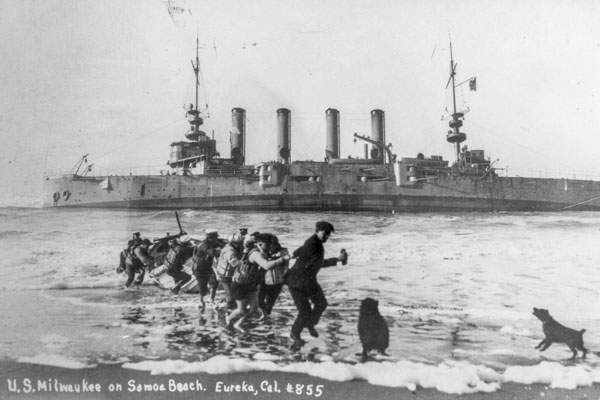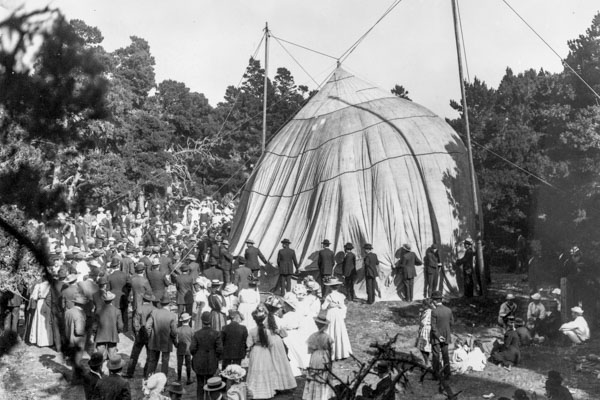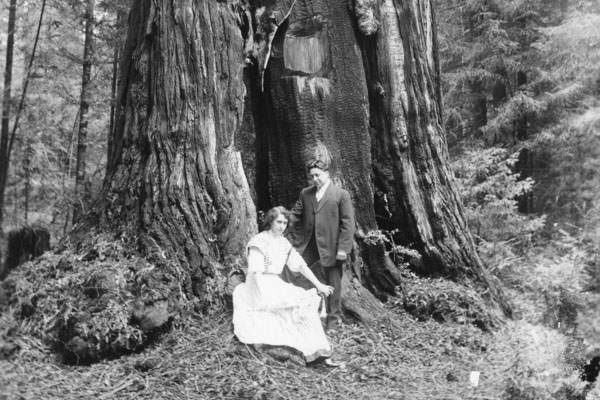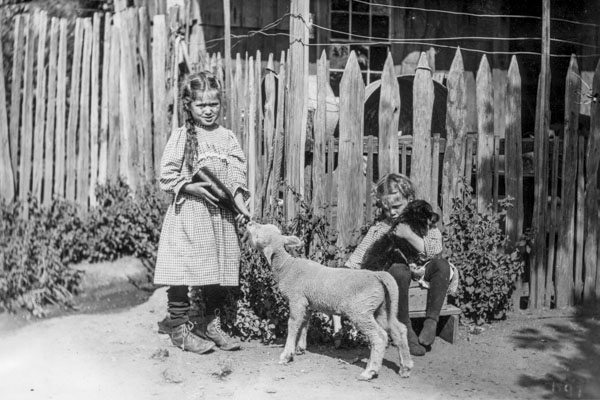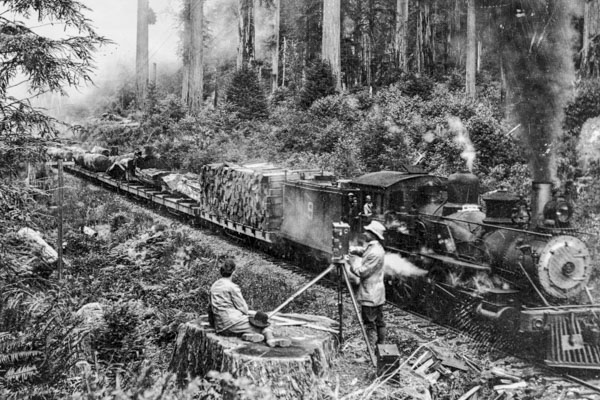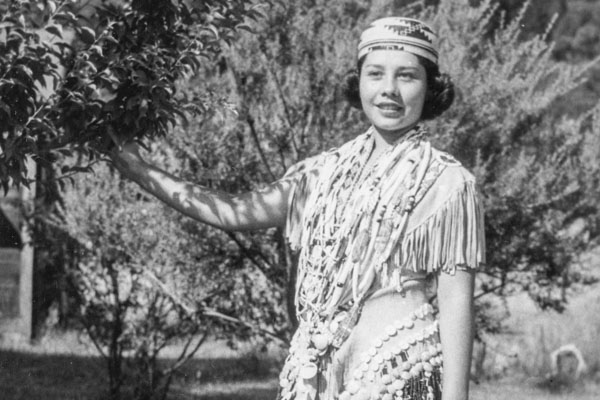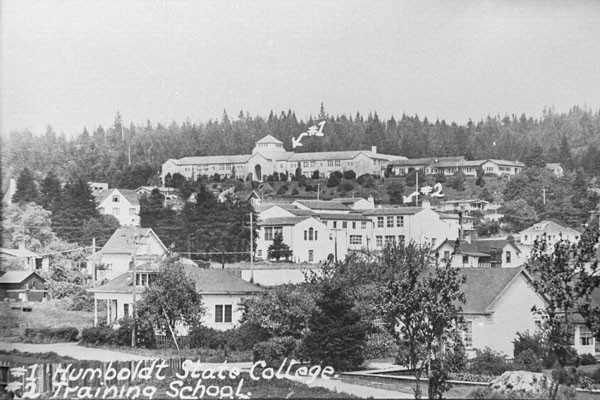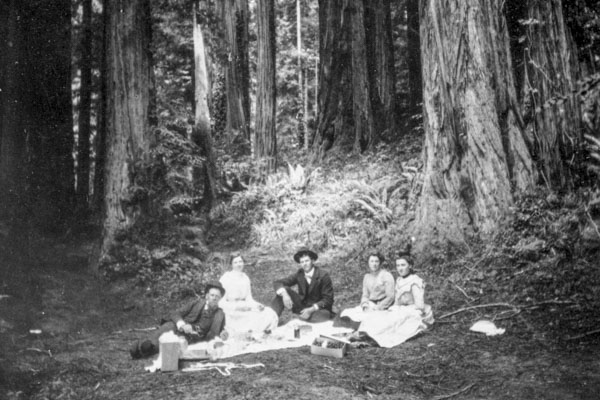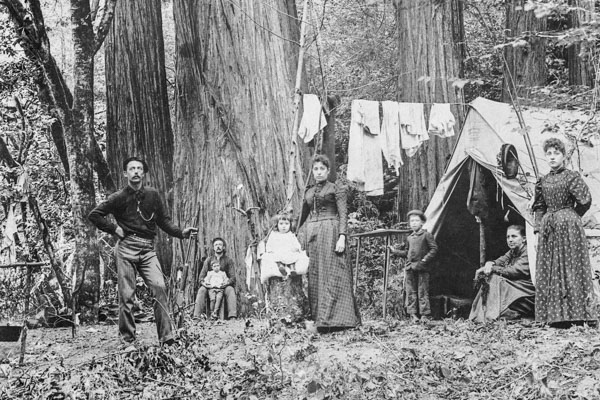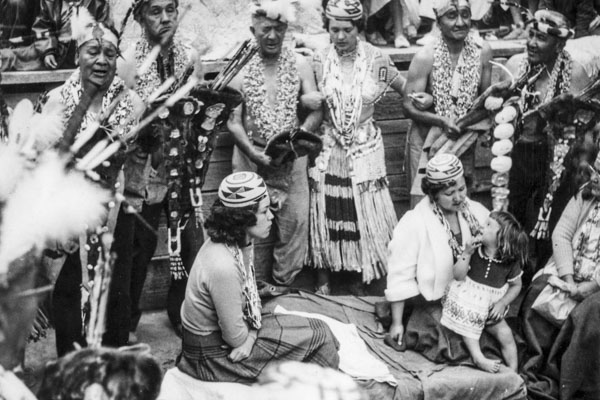You are here
Railroad Logging Notes, George Lennon and William Boyle
George Lennon worked in the woods long enough to span different ways of logging redwood in the area. Wm. "Bill" Boyle talked [with Lennon] one day about railroad logging. He also spanned the changes that included several ways to bring logs to a "landing." A "landing" could have been "end of track" of a spur in the woods, pre-WWII. After 1945 fire Hammond Lumber Co. put in trucks and private roads for the giant trucks as they had lost bridges etc. during the fire. Much of their rail equipment (rolling stock) was trapped in the woods. Some was later taken out in pieces.
These off highway trucks used in the Big Lagoon area could carry 3 railroad car loads. Hammond had a reload at Crannell until the State of CA wanted the rail route by Clam Beach for a new freeway. Then the lumber company used highway trucks to Big Lagoon and had their reload to the legal highway tucks there. The off highway trucks continued to be used in the woods. Also large front end loaders.
Hammond sold to Georgia Pacific in the mid 1950s (I think). Later G.P. had to form L.P. - Louisiana Pacific in the late 60s (I think). Some years later L.P. sold also. Redwood needs more growth time so I suppose that entered into their reasoning. Simpson now (1999) owns the land.
Back to railroad logging notes. During the railroad logging days it was the duty of the "rig up" crew to attach and mount the necessary guy lines, high lead block, haul back block and loading lines as needed to a spar pole or tree.
The "high climber," after trimming the spar tree, and topping it, attached a pass line block. This was threaded with 3/8 inch line (wire rope) which was used to hoist up the larger and heavier guy lines which the "high climber" shackled to the tree. After the guy lines were all hung, the climber got out of the tree and the lines were tightened from the ground using a "donkey engine." They sued other trees or stumps for the guys.
The climber was then pulled back up the tree with the pass line. After attaching his life line he unhooked himself from the pass line. The empty pass line was then lowered and the blocks were raised and "hung" on the tree by the climber.
For a "slacker setting," this included a main line block, skyline block, and the haul back block. For a "yarder setting" the skyline block is eliminated. On a "yarder setting" the main line only goes out into the woods and "picks up" logs and is pulled back by the haul back line. A "slacker setting" would use several tail trees for the skyline. These blocks would be high on the spar tree out of the way of possible use of the "wiring" (my term) used by the loading crew to handle loading the logs to the rail.
On the lower part of the spar tree might be a "hayrack boom." The back end of the boom is held up by a "heel guy" attached to the tree. The boom is used by a loading crew to load the logs pulled into the "landing" by the other lines. The "squirrel line" is attached to the front end of the boom.
To get a landing site ready for logging after trees were down and a rail spur was in place, a "rig up" crew did the work just mentioned. The rig up crew consisted of a hook tender, (foreman or boss), high climber, head rigger and six or seven other riggers, and engineer to operate a donkey.
During logging, a "tail tree rig up crew" was used with a slacker setting to move the skyline to a new tail tree. This group was a part of the slacker crew. At one time Hammond had three or four climbers and one rig up crew separate from the slacker rig up crews.
A slacker setting had three types of crews under the direction of a "hook tender." These included the tail tree rig up, the choker setters and the loading crew. Three or more choker setters would be nearby fastening line (wire rope) to a log to be pulled into the landing to be loaded. A "whistle punk" might be used to signal between the engineer and the choker setters. The head rigger might be directing three or more choker setters. The early slackers were wood fired so a fireman was also part of the crew. The loaders used a different machine to load the logs, often called the loading pot. He needed a fireman also. Another member, the "powder monkey" used dynamite "black powder" to sometimes blow a hole by a log so the choker could get a line around the downed log. Also sometimes a log was split with dynamite. The powder monkey knew his job. Later large machines "rammed" to split log.
Much of this was very big timber. A spar tree could be five to ten foot diameter at the base and three or more lengths of a rail car. Sometimes a "spar pole" had to be brought to a site. On rare circumstance a tree might be "jumped." This was when a suitable tree had left as a spar nearby, but not in exactly the right place.
Bill once saw a tree "jumped." To jump a tree it was first trimmed and topped. Then four guy lines were attached. A log was put in front of tree. The guys were off set to each side. On two of the lines the pulling line of a donkey engine and a stump block was used. The roots were left on but cut loose as a kind of base. The log in front helped keep the tree from falling. The two inch line was around the tree as low as possible. Some roots were blown off with powder as the tree was readied. It was pulled five or six feet then the guys were readjusted and the process repeated. Roy Hale, assistant woods superintendent, bossed the job. The log helped raise the spar a little. The line used as a strap was used a luff or a double luff, two blocks on a strap. Tree slanted slightly to one side during the pull for lift advantage to make it easier to pull. Spar tree usually never jumped over 20 or 30 feet. After the logs were brought to the landing the loading crew took over. They unhooked the choker setters lines from the log.
In addition to the hook tender, the head loader was responsible for the load. The crew was a couple of second loaders, a chaser and an engineer on the "loading pot" and fireman when wood was used to fire the equipment. Later diesel was used. The chaser was unhooking one log while others of the crew were loading a different log. The head loader chose which logs would fit together to balance the load.
(My [Katie's] notes) Thirty years later, the "Tower" was introduced and used where cat logging not possible. This machine had a "spar pole" that could be raised and lowered to "rig up." The color coded handles to control guy lines were a far cry from what had gone before. Steep areas still needed someone to attach lines to lift logs to a landing. Trucks large enough to hold three railroad car loads were used on off highway roads in the woods. The logs were reloaded to highway trucks for trip to Samoa.
